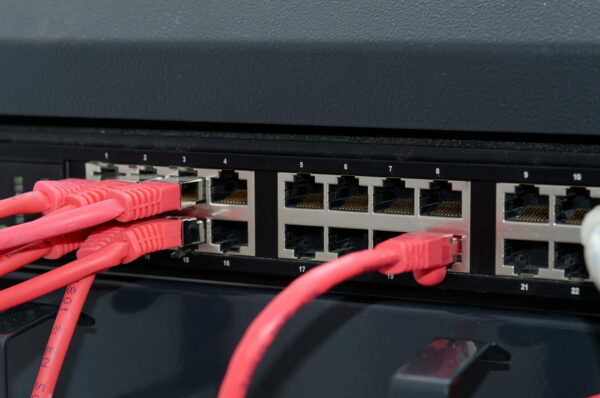✅ Last checked on
In today’s digital age, our homes are becoming increasingly connected. From smart appliances to gaming consoles, our reliance on a strong and reliable home network is greater than ever. However, achieving the best possible network performance often requires delving into the advanced settings of your home network.
In this comprehensive guide, we will explore the intricate details of Home Network Customization: Advanced Settings, providing you with the knowledge and tools to optimize your network for seamless connectivity.
Unveiling Home Network Customization: Advanced Settings

What are Advanced Settings?
Before we dive into the nitty-gritty of advanced settings, let’s establish what they are. Advanced settings refer to the configurations and options within your home network router that go beyond the basic setup. These settings allow you to fine-tune your network to meet your specific needs and maximize its performance.
Navigating to Advanced Settings
Accessing your router’s advanced settings may vary depending on the manufacturer and model, but the general process remains consistent:
- Connect to your router: Ensure your computer or device is connected to the router, either via Wi-Fi or an Ethernet cable.
- Access the router interface: Open a web browser and enter your router’s IP address (usually something like 192.168.1.1) in the address bar.
- Log in: You’ll be prompted to enter your router’s username and password. These credentials are often found on a sticker on the router itself or in the user manual.
- Explore the settings: Once logged in, you’ll have access to a range of options and settings, including advanced settings.
Now that we’ve covered the basics, let’s delve into the key advanced settings that can significantly impact your home network’s performance.
Optimizing Your Home Network
Quality of Service (QoS)
Quality of Service (QoS) is a crucial advanced setting that allows you to prioritize specific devices or applications on your network. This feature ensures that critical tasks, such as video conferencing or online gaming, receive a higher share of your network’s bandwidth.
To configure QoS:
- Identify your priority devices or applications.
- Access your router’s QoS settings.
- Assign higher priority to the selected devices or applications.
By doing so, you can enjoy lag-free gaming sessions and smooth video calls without interruptions.
Channel Selection
Wi-Fi routers operate on different channels within the 2.4 GHz and 5 GHz frequency bands. Channel selection is an advanced setting that can significantly impact your Wi-Fi performance. Overlapping channels can lead to interference and slower speeds.
To optimize your channels:
- Access your router’s Wi-Fi settings.
- Choose the least congested channel for both 2.4 GHz and 5 GHz bands.
This simple adjustment can result in faster and more reliable Wi-Fi connections.
Firmware Updates
Keeping your router’s firmware up to date is often overlooked but critical for network stability and security. Manufacturers regularly release firmware updates to address bugs, improve performance, and enhance security.
To update your router’s firmware:
- Access your router’s settings.
- Look for the firmware update section.
- Follow the on-screen instructions to update to the latest version.
Guest Network
Setting up a guest network is a valuable advanced feature, especially if you have visitors who need internet access. It allows you to create a separate network with limited access to your primary network, ensuring your guests can connect securely without compromising your main network’s security.
Home Network Customization: Advanced Settings FAQs
How often should I update my router’s firmware?
It’s advisable to check for firmware updates every few months or as recommended by the router manufacturer. Staying up to date ensures your router operates efficiently and securely.
Can I prioritize devices for gaming and streaming simultaneously with QoS?
Yes, most modern routers support simultaneous prioritization of devices or applications. This means you can ensure a seamless gaming experience while streaming content without any hiccups.
Are advanced settings the same for all routers?
No, advanced settings can vary significantly between router models and manufacturers. It’s essential to consult your router’s user manual or online support resources for specific guidance.
Will optimizing channels improve my network’s range?
Optimizing channels primarily impacts the performance and reliability of your Wi-Fi connection. To extend your network’s range, consider additional solutions such as Wi-Fi range extenders or mesh systems.
Can I set up a guest network with a password?
Yes, setting up a password for your guest network is highly recommended. It adds an extra layer of security and ensures that only authorized guests can access the network.
What if I forget my router’s login credentials?
If you forget your router’s login credentials, you can usually reset the router to its default settings by pressing a reset button. Refer to your router’s manual for specific instructions on this process.
Conclusion
Mastering Home Network Customization: Advanced Settings is the key to achieving a seamless and reliable network experience. By understanding and applying the advanced settings mentioned in this guide, you can take control of your home network, ensuring that it meets your specific needs for work, entertainment, and communication.
Don’t hesitate to explore your router’s settings and experiment with different configurations to find the optimal setup for your home. Remember that these advanced settings are designed to empower you to customize your network to your preferences, so make the most of them.
In an era where connectivity is essential, the power to optimize your home network is at your fingertips. Take charge, enhance your online experience, and enjoy the benefits of a smoothly running, customized home network.